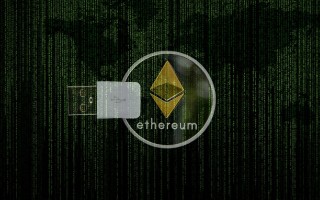Title: Exploring the Future of Blockchain Security
Blockchain technology has emerged as a revolutionary force across various industries, promising decentralization, transparency, and immutability. However, as with any emerging technology, ensuring its security remains a paramount concern. Let's delve into the current landscape and future prospects of blockchain security.
Before discussing the future, it's crucial to understand the present challenges facing blockchain security:
- Smart Contract Vulnerabilities: Smart contracts, the selfexecuting contracts with the terms of the agreement between buyer and seller being directly written into code, are prone to bugs and vulnerabilities.
- 51% Attacks: In proofofwork (PoW) blockchains, the 51% attack remains a concern, where a single entity gains majority control over the network's mining power, enabling them to manipulate transactions.
- Privacy Concerns: While blockchain offers pseudonymity, ensuring the privacy of sensitive information without compromising transparency poses a challenge.
- Regulatory Uncertainty: Varying regulatory frameworks across jurisdictions add complexity to blockchain security, hindering mainstream adoption.
Despite these challenges, several developments and strategies point towards a more secure future for blockchain technology:
- Enhanced Consensus Mechanisms: Innovations in consensus mechanisms beyond PoW, such as proofofstake (PoS), delegated proofofstake (DPoS), and Byzantine fault tolerance (BFT), aim to mitigate the risks associated with 51% attacks.
- Formal Verification: Integrating formal verification techniques in smart contract development can help identify and eliminate vulnerabilities before deployment, enhancing overall security.
- PrivacyEnhancing Technologies: Solutions like zeroknowledge proofs, ring signatures, and homomorphic encryption enable privacypreserving transactions while maintaining the integrity of the blockchain.
- Interoperability and Standards: Establishing interoperability protocols and industrywide standards facilitates secure communication and data exchange between different blockchain networks.
- Regulatory Clarity: Clear and consistent regulatory guidelines foster trust and confidence among users and businesses, driving widespread adoption without compromising security.

For individuals and organizations navigating the complex landscape of blockchain security, here are some practical recommendations:
- Educate and Train: Invest in comprehensive training programs to enhance understanding of blockchain security principles and best practices among developers, users, and stakeholders.
- Implement Robust Security Measures: Deploy multifactor authentication, encryption, and access control mechanisms to fortify blockchain infrastructure against cyber threats.
- Regular Audits and Penetration Testing: Conduct routine security audits and penetration testing to identify vulnerabilities and weaknesses in blockchain systems, ensuring timely remediation.
- Stay Abreast of Regulatory Changes: Stay informed about evolving regulatory requirements and compliance standards relevant to blockchain operations, and adapt strategies accordingly.
- Collaborate and Share Insights: Foster collaboration and knowledgesharing within the blockchain community to collectively address security challenges and drive innovation.
The future of blockchain security holds immense promise, fueled by ongoing technological advancements, regulatory clarity, and collaborative efforts within the industry. By proactively addressing current challenges and embracing innovative solutions, stakeholders can unlock the full potential of blockchain technology while safeguarding against emerging threats.
标签: 区块链安全态势感知 区块链技术的安全问题 区块链前景如何未来在哪里 区块链安全公司有哪些







